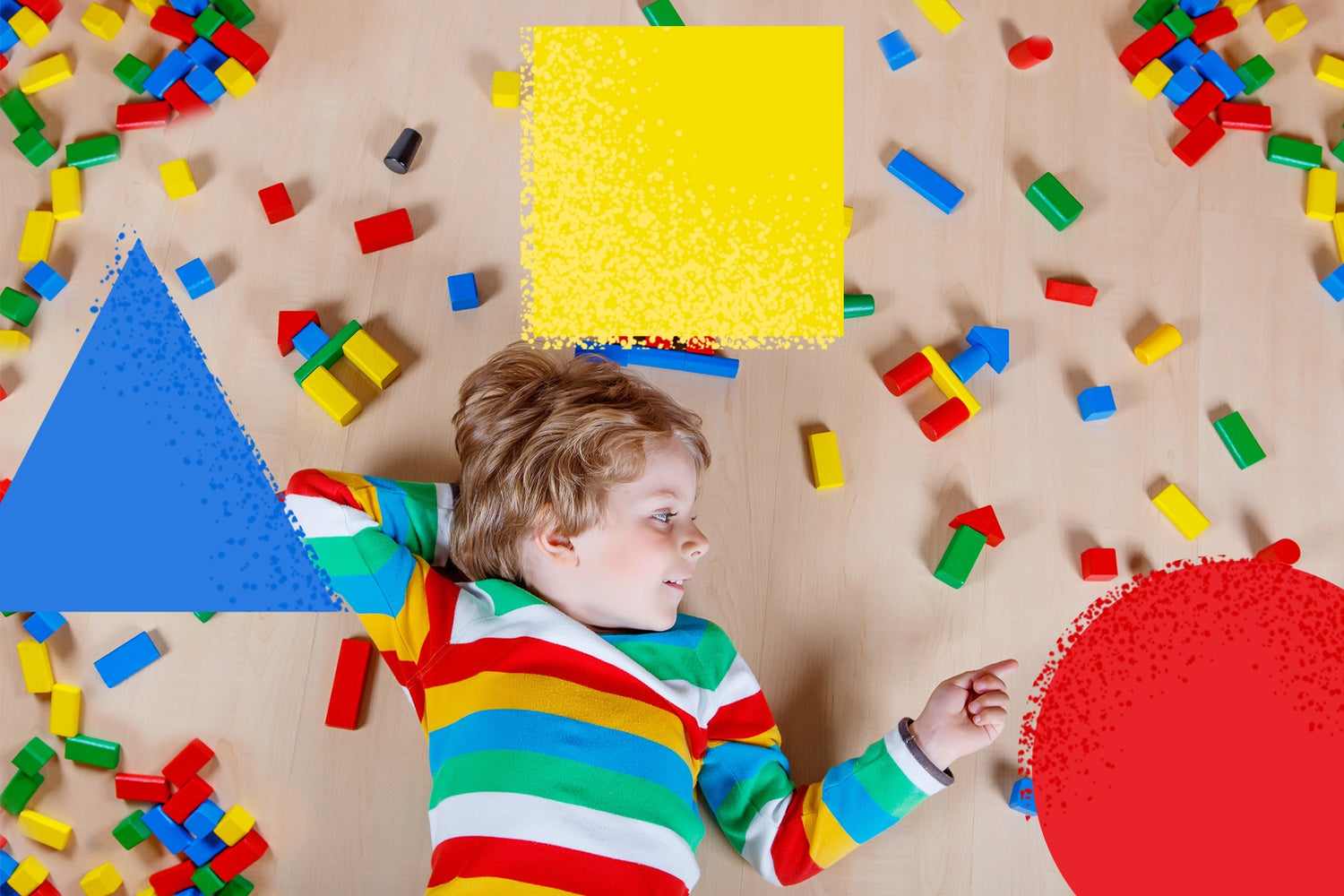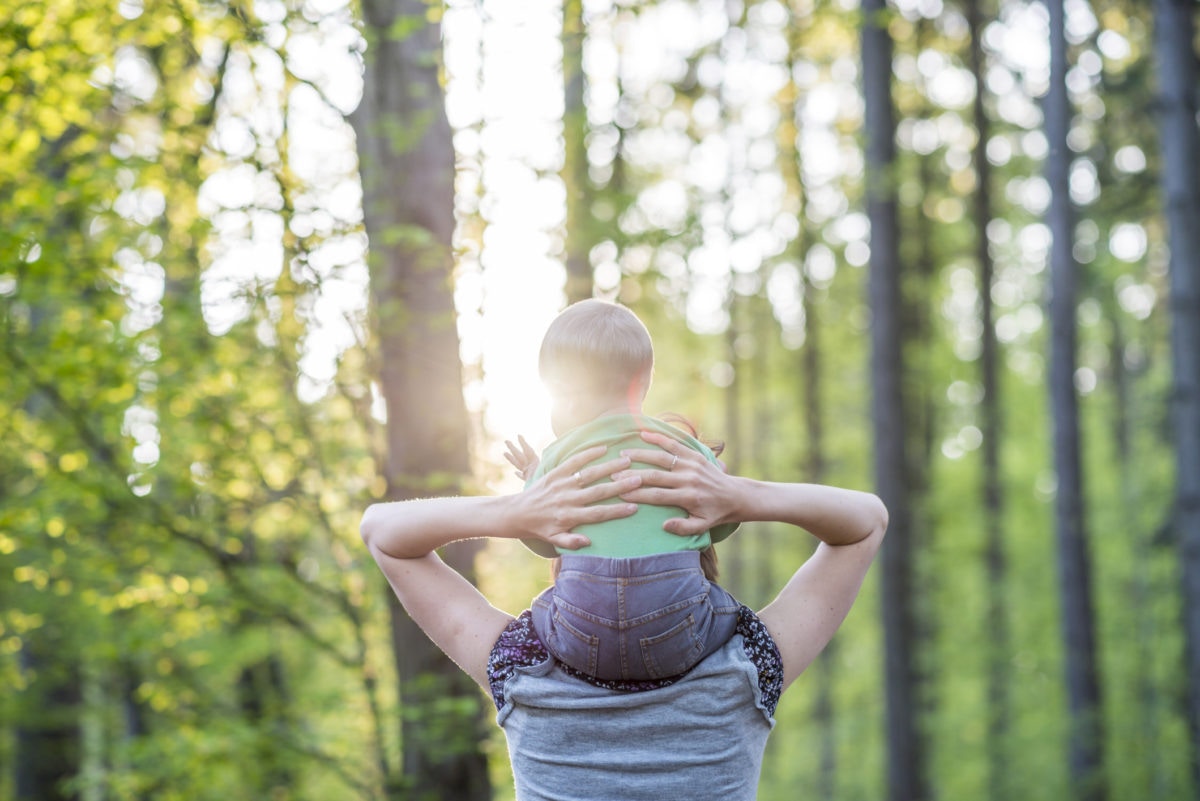My six-year-old recently returned from a birthday outing with his grandparents, proud to show us his fresh-off-the-shelves 1,003-piece Lego set, prominently labeled AGES 9-14. “I chose it myself!” he beamed. My husband and I exchanged tired glances and spent the better part of the next week making excuses for why it wasn’t a good time to open the box. Weeks later, as we tagged out in our rotation between roles as lead Lego set builder and lead defense line against our resident four-year-old, my husband smiled and whispered, “I kind of like this.” I nodded. I did, too. The truth was, there was something immensely satisfying and even cathartic about playing with Lego bricks again. This wasn’t the first time we’d found ourselves fully involved in our kids’ toys, either. It had happened early on with their set of perfectly nesting cardboard boxes, then again with their smooth wooden blocks, and yet another time with their Magnatiles. With each toy, we’d followed their lead in starting the play, but then found ourselves perfecting our creations long after the kids had moved on to something else. I suppose age knows no boundaries when it comes to playing with blocks.
Why should our kids play with blocks?
The value of blocks as both a toy and a learning tool has been recognized since the 17th century, when philosopher John Locke referred to “dice...with letters on them to teach children the alphabet by playing,” presumably documenting the use of the now ubiquitous alphabet blocks for the very first time. In the early 19th century, when Friedrich Froebel founded the first formal kindergarten, he included in his curriculum a series of educational toys known as the Froebel Gifts, comprised almost entirely of blocks. Indeed, blocks have earned their place as both endless entertainment and timeless education tools, landing in the modern toyscape with multiple inductions into the National Toy Hall of Fame and as much staying power as they held in 1693. The consistency with which blocks have been offered as both toy and tool hasn’t wavered, in large part due to their proven ability to build important skills. Blocks are known to build central knowledge beginning as early as infancy with the concepts of object permanence and basic hand-eye coordination. By preschool, children who play with blocks have more refined visual-spatial skills and more varied and creative approaches to problem-solving than their peers who don’t. Even more impressively, children who practice more complex building skills using blocks and Lego bricks from a young age achieve at higher levels in math into their high school years.
How can we encourage beneficial block play?
Knowing that block play has far-reaching cognitive benefits that extend well beyond the toddler years, how can we encourage our kids to stay engaged and interested in block play? The key is to provide age-appropriate, stimulating toy blocks – a job made easier by the rapidly expanding toyscape that encompasses them. Here are some ideas to engage and captivate your kids with block play at any age:
Ages 0 - 18 months
Parents can begin block play before their babies can even hold a toy. Start with large, lightweight blocks made of fabric or cardboard. Show your baby a block, cover it with a blanket, and then pull the blanket off to develop your child’s sense of object permanence. Older infants will be able to participate in simple building and toppling games. Try stacking two blocks on top of each other and then tell your baby, “Your turn!” as you hand her the blocks. She might not perfect the stacking game for some time, but it’s still fun to try. As your child approaches a year, you can count three blocks as you stack them together. Allow your child to knock them over and then count them again as you stack the same three up again. Exclaim, “There are still three blocks!” to help develop number sense and continuity.
Ages 18 months - 3 years
By toddlerhood, many children are ready to use smaller wooden blocks, pattern blocks, or even Magnatiles to begin construction play and pattern-making. Play games like “Can you build what I built?” to develop spatial and mental rotation skills. Inspire creativity with challenges, such as “Who can build a castle?” or “Who can build a parking garage?” Also allow plenty of time for free play and independent exploration to encourage your child’s unique interests.
Ages 4 - 7 years
In preschool and the early elementary years, many children begin to use construction blocks, like Mega Blocks, Duplo blocks, and eventually Lego bricks, in addition to the other blocks they’re already accustomed to. Construction blocks strengthen math skills, build creativity, and refine problem-solving skills. A simple math game to play starts with one long brick of single width. Challenge your child to see how many different ways he can create a piece of the same length using two bricks. Help your child communicate these solutions through language: “The long piece has 10 bumps on it. You covered it just right by using one piece that’s seven bumps long and another piece that’s three bumps long. Good job!” In older kids, translate these into number sentences by saying, “Look, you showed me that seven plus three equals 10!”
Ages 8+
Lego toys used to signal the end of the line when it came to the complexity of block building, but new block toys integrating more complex STEM skills are changing that. The market continues to expand for block-based online games, such as Minecraft and even the old-school Tetris, which help kids fine-tune mental rotation and spatial awareness. Monitor online use, but encourage your child to challenge herself or join local clubs to play with others who share the same interests. For the Lego-aficionado who’s ready to take it to another level or for the aspiring young engineer, Tenka Labs’ Circuit Cubes offer an even more engaging aspect to traditional building block toys. Kids can make circuits and incorporate motors and lights into their own freestyle creations. Tenka Labs has also created sets to build motor-powered cars, working light circuits, and moving sculptures. Best of all, the pieces fit with traditional Lego bricks, encouraging kids to extend the use of their undoubtedly expensive and expansive Lego collection. Blocks are a timeless toy, representing endless possibility and extensive educational benefits. These increasingly complex, STEM-oriented toys give our kids the opportunity to benefit from block play throughout childhood. With so many new and engaging options on the market, you might just find yourself caught up in block play all over again, too.


